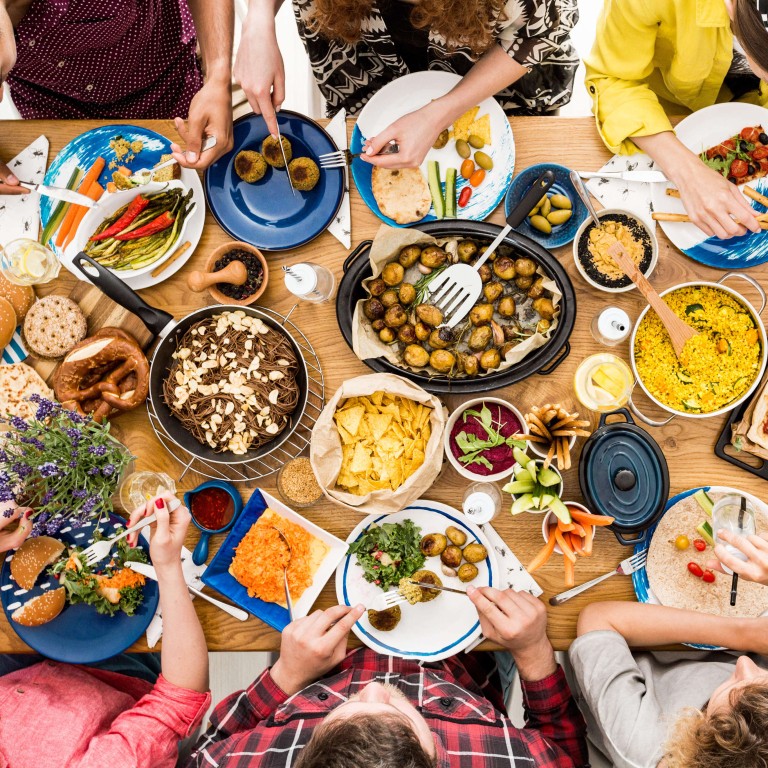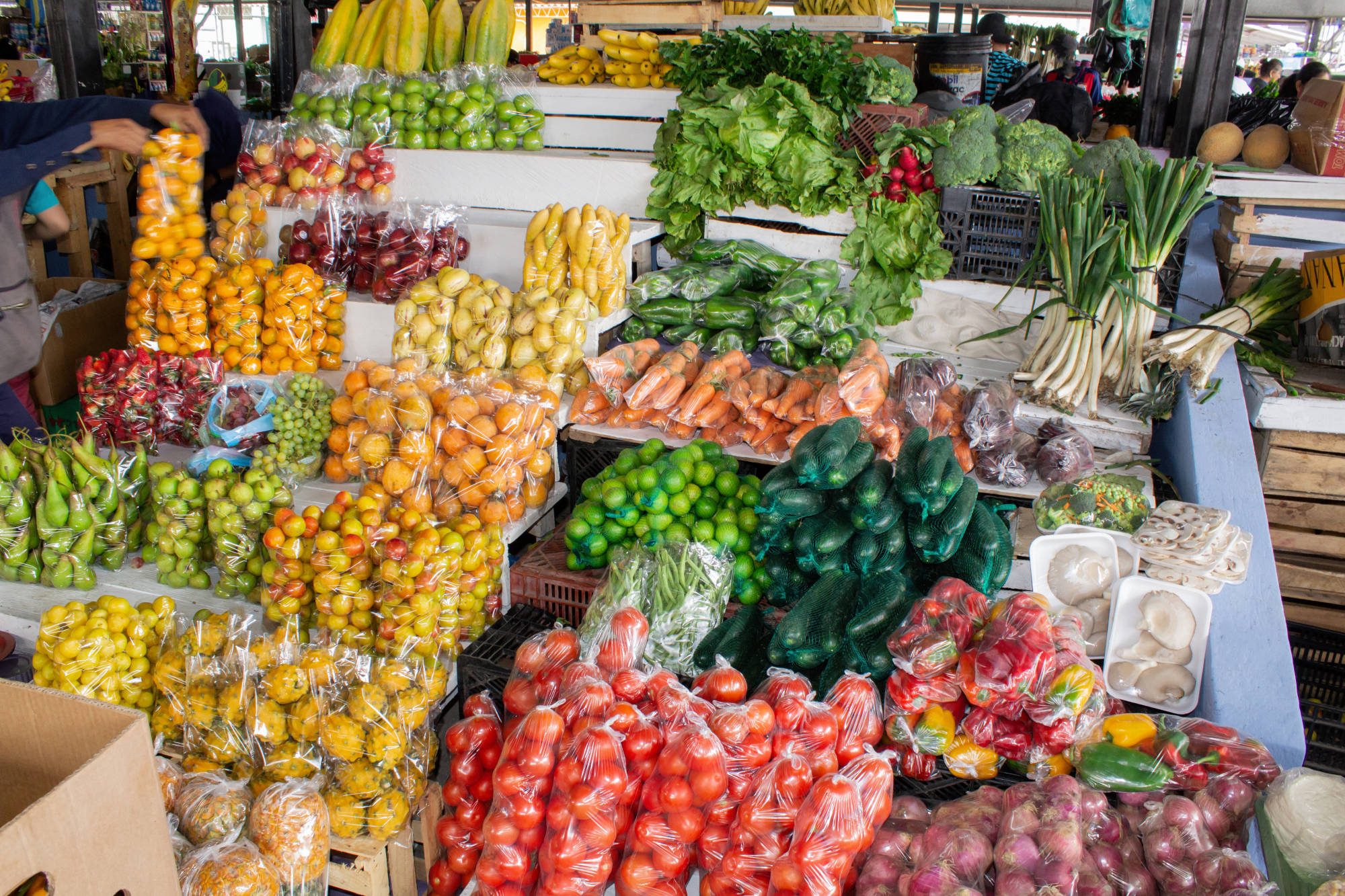
Vegan diet myths debunked: experts talk protein, iron, calcium, nutrients and the cost of whole food plant-based (WFPB) diets
- A WFPB (whole food plant-based) diet is less costly, more nutritious and far more satisfying than you might think, nutritionists explain
- They address some of people’s biggest concerns, from why a well-planned WFPB diet is not lacking in iron, protein or calcium to how it’s not hard to follow
As January draws to a close – and with it, the annual Veganuary challenge that encourages people to go vegan for a month – you may still be thinking about adopting a whole food plant-based (WFPB) diet. But are you worried that you’ll be undernourished or hungry all the time, or you’ve heard that eating only plant foods can be expensive and difficult to sustain?
Experts say that’s just not true: a diet made up of vegetables, fruit, whole grains, legumes, nuts and seeds, with little to no processed or convenience foods, is not just good for your health, but filling, affordable and a pleasure to follow.
We asked three WFPB nutrition experts to debunk some of the most common myths surrounding the vegan diet.
Myth 1: It’s lacking in iron
A WFPB diet is not lacking in iron if you consume iron-rich plant foods like lentils, beans, chickpeas and green leafy vegetables such as spinach and kale.
“People tend to get adequate iron on a WFPB diet if they include these foods regularly,” says Anna Herby, a dietitian and certified diabetes educator from the Physicians Committee for Responsible Medicine in the United States. “WFPB eaters also tend to consume a high amount of vitamin C, which helps to improve iron absorption.”

Compared with the iron found in animal products – heme iron – that’s readily absorbed in the intestinal tract regardless of need, non-heme iron from plant sources is better regulated and not as easily absorbed. According to Herby, this means that the body can absorb the iron that it needs from plants, and the rest is eliminated.
“When most of the iron in your diet comes from animal products, your body can’t regulate the absorption. Too much iron may be absorbed – and this is linked to heart disease, diabetes and colorectal cancer.”
Myth 2: It’s protein-deficient
Many plant foods are excellent sources of protein, Herby points out.
“The best ones include beans, lentils, chickpeas, quinoa and soy products like tofu. There’s even a good amount of protein in grains like oats and vegetables like broccoli. If you’re consuming a balanced plant-based diet and meeting your calorie needs, you will naturally meet your protein needs as well.”
She adds that many people who consume animal products are getting more protein than is necessary, not to mention some unhealthy extras.
“Plant protein comes packaged with protective nutrients like fibre and antioxidants, whereas animal protein comes packaged with harmful nutrients like saturated fat, cholesterol, heme iron and [carcinogenic chemicals known as] heterocyclic amines.” The latter, also known as HCAs, are formed when meat, poultry or fish is cooked at high temperatures, such as through frying, grilling and barbecuing.
Myth 3: It lacks calcium because it’s dairy-free
“Getting sufficient calcium is important but it’s equally important to keep the calcium you have,” she adds. “The body eliminates calcium minute by minute through the kidneys. Animal protein and sodium accelerate our calcium losses, so it’s wise to avoid animal protein and keep your sodium intake low.”

Myth 4: It’s not filling or satisfying
Plant-based foods tend to be high in fibre, which is very filling, says Dr Matthew Nagra, a naturopathic doctor at Tonume Integrated Health in Vancouver, Canada.
“In fact, this is a top reason why a WFPB diet can be beneficial for weight management, since some people may get full eating fewer overall calories,” he says. “For some, a greater concern may be not eating enough. This may especially be the case for athletes who need to eat a lot more to fuel their physical activity. The key here is to understand that you may need to eat larger portions to get the same amount of calories that you’d typically obtain if you were eating meat.”

Myth 5: It leaves you weak and nutrient-deficient
A balanced WFPB diet – focused on fruits, vegetables, whole grains, legumes, nuts and seeds – can provide almost all the nutrients a person needs, Herby says.
For instance, you’ll find Omega-3 fats in flax seeds and walnuts; iron in green leafy veggies, beans and lentils; zinc in soy products and nuts; iodine in sea vegetables and iodised salt; and calcium in kale, bok choy, almonds, tahini and oranges.
“According to a position paper released by the Academy of Nutrition [and Dietetics, a US trade association], a well-planned vegan diet is healthy, nutritionally adequate and appropriate for all stages of life,” Herby says. “[The paper] also emphasises that this diet is known for preventing and reversing chronic diseases like heart disease, diabetes, hypertension and obesity.”
If you follow a WFPB diet, Herby suggests consuming foods fortified with vitamin B12 or taking a vitamin B12 supplement. This vitamin is found in animal products but is actually made by bacteria.
Myth 6: It’s expensive
“A recent and comprehensive evaluation of food costs in 150 countries found that switching to a vegan or vegetarian diet from the standard diet in upper-middle-income and high-income countries could significantly reduce costs,” Nagra says.
“This is because many staple plant foods, such as grains and legumes, can be very cost-effective. It’s more the specialty products like plant-based meats and cheeses that can drive costs up. That said, plant-based diets are not inherently more expensive, and can actually significantly reduce food costs for many individuals.”

Myth 7: It’s hard to stick to
“The easiest way to transition to a WFPB diet is to take a few weeks and think about how your favourite meals could be modified,” Herby says. “For example, try a bean burger instead of a meat burger, or use marinara sauce on your pasta instead of Bolognese.” Add lentils to give it that meaty texture, she adds.
You’ll soon notice that you have a wide variety of foods to choose from. You’ll fare better eating this way if you get support from the people you share meals with, such as family and friends, so let them know about your decision to go plant-based, Herby says.
“With the popularity and availability of plant-based options growing day by day, this way of eating is easy to stick with, best for our health and sustainable for the long run.”

Myth 8: It’s boring
With an almost never-ending selection of plant foods available, WFPB meals can be exciting.
It’s easy to “veganise” your favourite meals: when making stir-fries, for example, replace the meat with mushrooms, tempeh or tofu; rather than dairy milk over your morning cereal, use plant-based milk such as almond or oat; instead of meat stews, why not cook a hearty bean or lentil casserole?
“Seasonings can also make plant-based dishes tastier,” Tan Hutchinson says. “Soy sauce, miso paste, nutritional yeast, gochujang [Korean chilli soy bean paste], soy bean paste and seaweed are just some seasonings you can use to give your meals that delectable, savoury umami flavour.”


